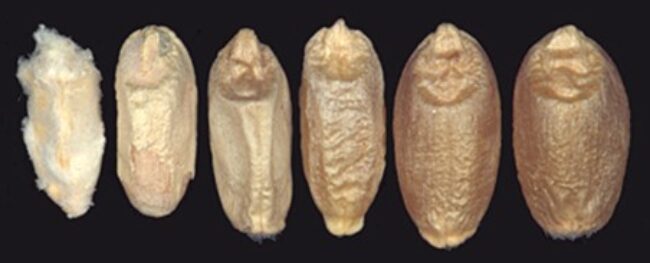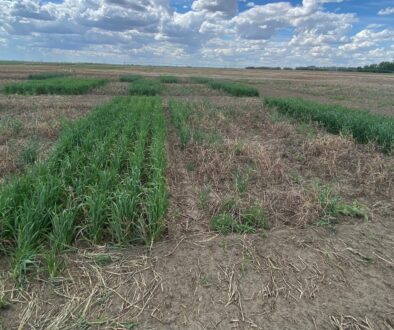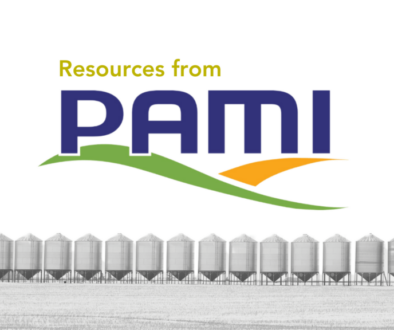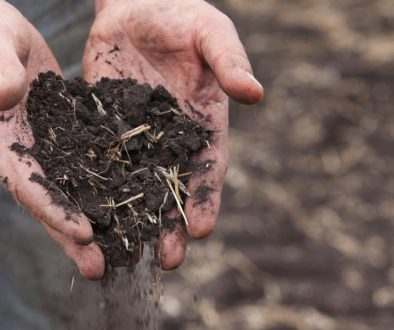Navigating the New FHB Risk Mapping Tool
Why the Fuss About Fuzz?
Fusarium head blight (FHB) is a serious fungal disease that mainly affects wheat (including durum), barley, oats, and corn. FHB causes economic losses in three ways: 1) yield losses; 2) downgrading of grains; and 3) mycotoxin contaminations reducing grain marketing options. FHB has become increasingly prevalent in the Prairie Provinces, calling for awareness and judicious management. One key FHB management practice as part of an integrated management approach is timely fungicide application when the risks are high. Risk maps are an important tool to assess FHB risks and make fungicide decisions. Starting in 2024, a unified prairie-wide FHB risk map for spring wheat, durum wheat, winter wheat and barley was introduced.


For more information on fusarium head blight check out these resources:
- Fusarium Head Blight | Disease | Government of Saskatchewan
- Province of Manitoba | agriculture – Dealing with Fusarium Head Blight (gov.mb.ca)
- Fusarium head blight – Overview | Alberta.ca
The Prairie Fusarium Head Blight Risk Maps are just one tool that should be used alongside field scouting and other management practices for optimal results.
Learn more about FHB from Dr. Kelly Turkington, AAFC in this episode of the BarleyBin Podcast
Prairie-wide Fusarium Head Blight Risk Maps Background:
Prior to 2024, all three Canadian prairie provinces created individual FHB risk maps, that were adopted from USA-developed models that have been modified for the Canadian prairies. The FHB risk maps are available during cereal flowering period, usually from early June until late July. However, due to the differences between the models used in each province, the past maps could show different risk levels. This was especially an issue for producers along provincial borders, who could receive different risk levels depending on which provincial map they viewed.
To address this issue, new Prairie-wide models were developed to improve the provincial FHB risk maps. The new models were developed for spring wheat, winter wheat, barley, and durum. The new models feature:
- Higher accuracy than the existing models
- Multiple ways to demonstrate FHB risks:
- FHB index (FHBi)
- Fusarium damaged kernels (FDK)
- Deoxynivalenol (DON)
- Note: Not all risk factors are currently available for all crops. (See the last section for details.)
Where Can You Find the Maps?
To view the new interactive prairie wide risk maps, a new site https://prairiefhb.ca/ is now available. Users looking for the maps will be guided to the new website instead of viewing the traditional stand-alone maps. From May 15 – August 31, the site uses over 500 weather stations across the prairies to generate the FHB risk maps.
The platform works on all devices that can connect to the internet and the displayed map can be downloaded to the device either as a pdf or an image file.
How to Use the Website:
The steps listed below correspond to the numbers displayed in Figure 2:
- Select the date of interest. The map is available up to the current date and runs from May 15 – August 31 each year.
- Choose the crop type from the four crops- winter wheat, spring wheat, barley, and durum.
- Select the variety to be analyzed from the drop-down arrow.
- Choose the type of risk from the three options. Some crop types do not have all three risk options.
- Click “Show Results” to view the risk map.
- Click on the Risk Legend to view the risk level that corresponds to each colour.
- Click on the hamburger icon to view the location of the weather stations.
- Click on the Export button to download the map view along with the selected date, crop, and variety.
Understanding the Map: What is FHB-Index, FDK, and DON?
The prairie-wide fusarium head blight risk maps use FHB index, FDK and DON to demonstrate FHB risks.
FHB index (FHBi) is the prevalence of the disease as measured in the field during the grain filling stage of crop development. It is the average percentage of infected kernels per infected head multiplied by the average percentage of infected heads in the field.
For example, if 1 in 4 heads are showing symptoms and an average of 10% of the head is infected, FHB index is calculated as: FHBi = (25 x 10)/100 = 2.5. Fields with FHBi of 10 or greater are considered high.
(source: University of Missouri)
Fusarium-damaged kernels (FDK) result from FHB infection in cereals and cause grain that is shrivelled and lightweight. It is a grading factor in cereal crops and is reported as the percentage of fusarium-damaged kernels in a grain sample. More information on grading factors can be found here.
How Do Farmers Use FHB Risk Maps?
For farmers, this new FHB risk map tool helps them assess the FHB risk levels in their area and assist in disease management decisions. Farmers should always scout their fields to determine if all aspects of the disease triangle are met. The three requirements for a disease to exist are a virulent pathogen, a susceptible host, and favourable environmental conditions. The risk maps only give an indication if environmental conditions favour disease development, the maps do not provide information on the two other aspects of the disease triangle.
Here are 2 examples of how to interpret FHB maps with respect to crop staging:
- If environmental conditions result in a high FHB risk but your wheat crop is not at a susceptible growth stage, then the overall risk would be low. Although the risk is low the crop should be scouted regularly to monitor growth stages and FHB risk.
- Another example, if most barley heads on the main stem have fully emerged (headed) and the FHB risk maps indicate high risk for infection, then your overall risk level would be high and fungicide application would be recommended.
This information, plus discussions with your local agronomist or extension agent can help guide fungicide application decisions for FHB suppression.
Generally, small cereal grains can be infected by FHB from heading to soft dough stage. Wheat is most susceptible to infection during flowering while barley is most susceptible immediately following head emergence.
Reminder: The new FHB map and models need to be used in tandem with traditional scouting to determine FHB risk for individual fields, specifically to determine if environmental conditions match host crop susceptibility timing.
Data Supporting the Fusarium Head Blight Risk Maps:
Data for the new models came from 1,800 plots (40 plots * 5 study sites * 3 provinces * 3 years). The study tested 80 combinations of hourly weather variables including rainfall, relative humidity, air temperature and solar radiation to determine those most highly correlated to the disease. Disease levels were determined from field observations for FHBi and from laboratory analysis for FDK and DON. The study developed FHBi risk models for all 4 crops, FDK risk models for spring wheat and durum, and a DON risk model for durum. The new models were developed in Western Canada and tested with an independent dataset collected from more than 300 producer fields on the prairies. The large dataset and validation method ensure the accuracy of the new models. Additional study is underway to gather more data points for developing models for the risk parameters of the other crops and to further increase the accuracy of the developed models.







